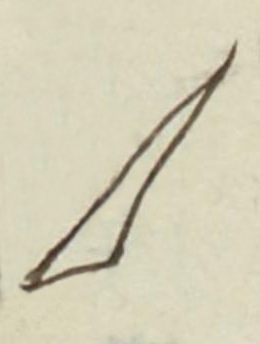huictli (MH497v)
This black-line drawing of the element huictli (digging stick) has been taken from the compound glyph of the personal name, Zacamol (see below). The shape sits at an angle and is triangular, with the wide end at the bottom.
Stephanie Wood
Evidence that the huictli came to be called a coa in Mexican Spanish comes from the Spanish-language text in the Florentine Codex.
Stephanie Wood
1560
Jeff Haskett-Wood
herramientas, agricultura, coas

huic(tli), indigenous digging stick with a flat blade, https://nahuatl.wired-humanities.org/content/huictli
Matrícula de Huexotzinco, folio 497v, World Digital Library, https://www.loc.gov/resource/gdcwdl.wdl_15282/?sp=74&st=image
This manuscript is hosted by the Library of Congress and the World Digital Library; used here with the Creative Commons, “Attribution-NonCommercial-ShareAlike 3.0 License” (CC-BY-NC-SAq 3.0).


